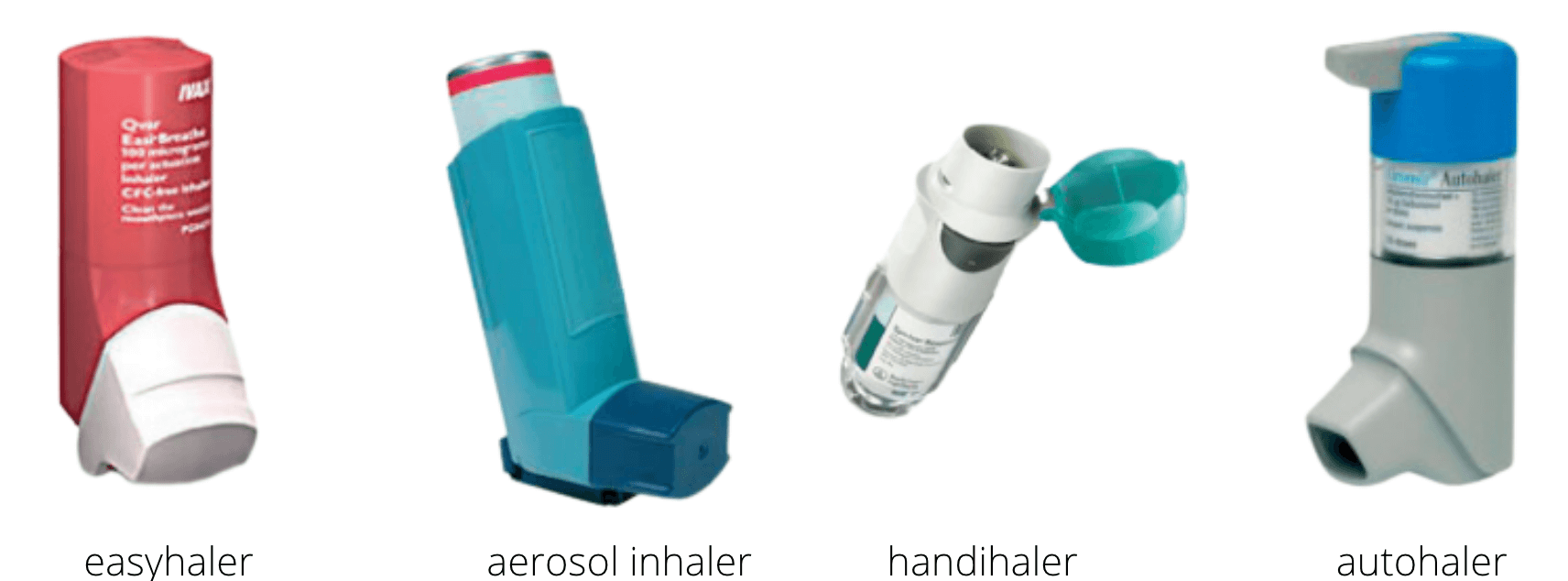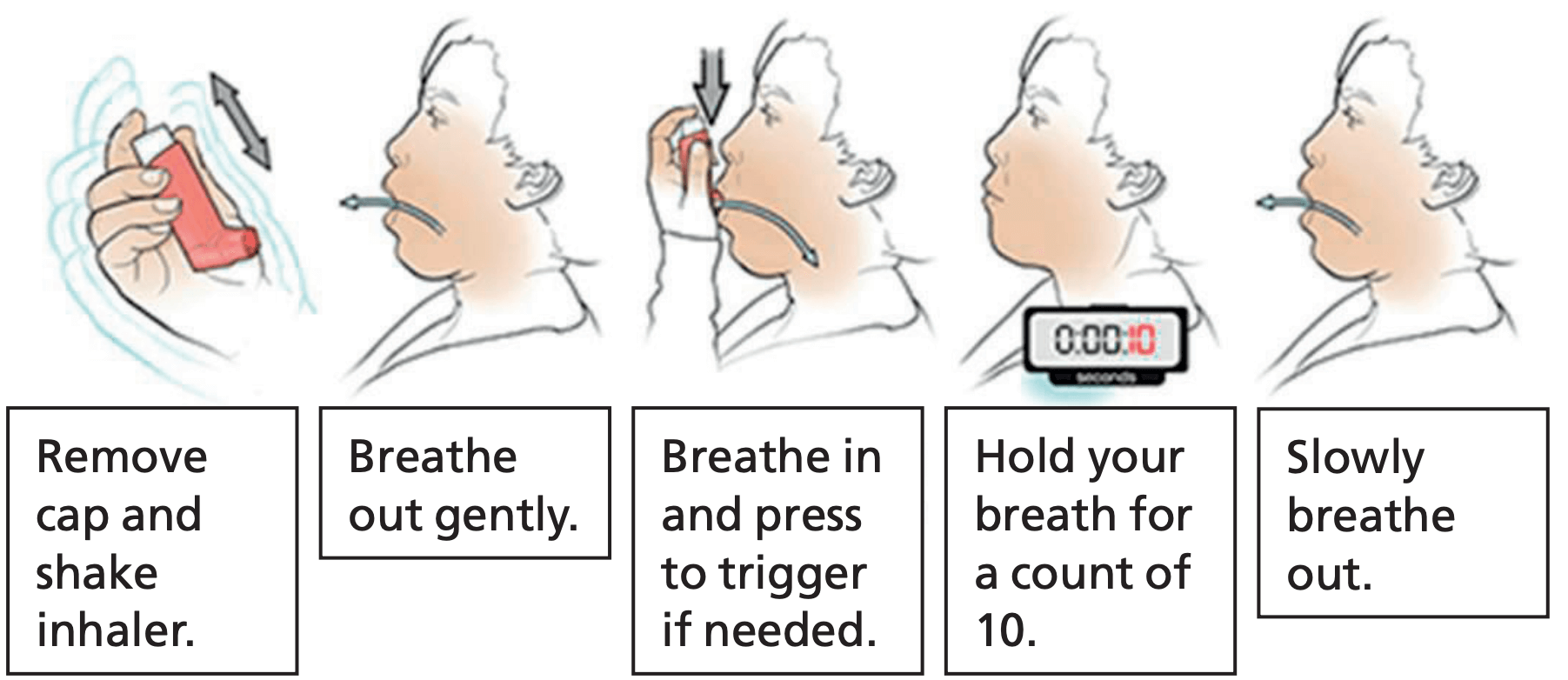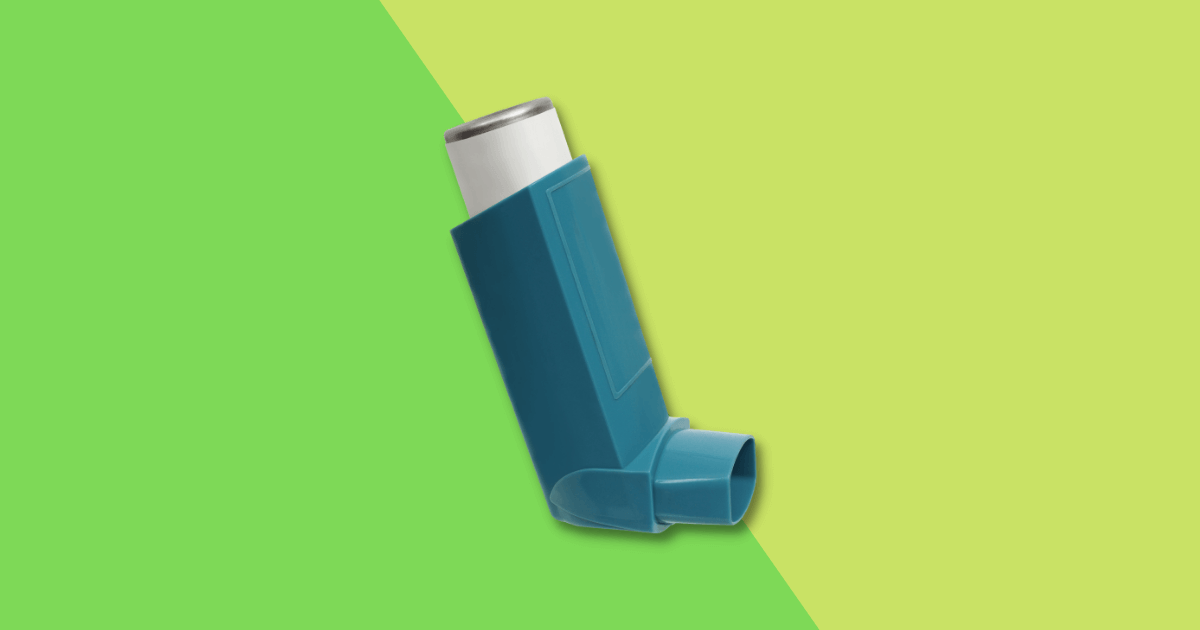How to use an inhaler
Table of contents
Do you use inhalers for your asthma treatment or for chronic obstructive pulmonary disease (COPD)? Are you are using them correctly? Incorrect use makes inhalers less effective in controlling your asthma symptoms because the medication may not even be getting into the lungs. If you have asthma, it is important to make sure that your asthma inhaler technique is correct. It’s a good idea to bring your inhaler to your medical appointments. That way your health care provider can make sure you are using it correctly. Read on for a quick guide on how to use an inhaler.
Types of inhalers
Inhalers can deliver medicines to open the airway and let more air move in and out of your lungs. This means air can flow freely into your lungs to prevent asthma attacks, relieve symptoms during an asthma attack, or do both. There are two main types of inhaler devices.
Metered-dose inhalers (MDI)
Advair HFA, Alvesco, Atrovent HFA, Dulera, Flovent HFA, ProAir HFA, Proventil HFA, QVAR, Symbicort, Trelegy Ellipta, Anoro Ellipta, Spiriva Handihaler and Ventolin HFA, are examples of products available as an MDI.
This is the most commonly used type of inhaler in use since the 1950s. The inhaler can be described as boot-shaped with the mouthpiece sticking out at the bottom into which a pressurized canister is inserted. The aerosol canister contains corticosteroid medication.
A measured amount of medicine is delivered to your lungs by inserting the mouthpiece into your mouth and pushing down on the canister while inhaling. A counter on the inhaler shows you how many doses are remaining in the canister.
The most difficult but essential part of using an inhaler is to coordinate your inhalation with the release of medicine from your inhaler to ensure that the drug reaches your lungs.
To reduce the possibility that the medicine stays in your mouth, a holding chamber called a spacer can be attached to your MDI. Spacer devices make it easier to get the medicine into your lungs by holding the release of medicine. It creates more time for you to inhale slowly, deeply, and at your own pace to get the full dose into your lungs. Some MDIs, called breath-actuated inhalers, automatically release a puff of medicine when you inhale.
Be aware of the type of inhaler your doctor prescribes to you and double-check that you are using it correctly by demonstrating your technique. If anything is unclear on how to use your inhaler ask your doctor, pharmacist, or healthcare provider.

Steps to using an MDI (inhaler without a spacer)
Get the inhaler ready for use
- Take the cap off
- Look inside the mouthpiece and make sure there is nothing in it
- Prime the inhaler. This simply means spraying it into the air. You need to do this when you use an inhaler for the first time, or if you haven’t used it for 2 weeks or more
- Before each use shake the inhaler 10 to 15 times
- Breathe out all the way
Breathe in slowly
- Hold the inhaler upright with the mouthpiece down. Place your lips around the mouthpiece so that you form a tight seal around it and take a slow deep breath
- As you start to slowly breathe in through your mouth press down on the inhaler one time
- Keep breathing in slowly, as deeply as you can
Hold your breath
- Take the inhaler out of your mouth. If you can, hold your breath as you slowly count to 10. This lets the medicine reach deep into your lungs
- Pucker your lips and breathe out slowly through your mouth
- If you are using inhaled, quick-relief medicine like Ventolin, wait about 1 minute before you take your second puff. You do not need to wait a minute for your next puff for other medicines such as steroids
- Replace the cap on the mouthpiece and make sure it is firmly closed
- After using your inhaler, rinse your mouth with water, gargle, and spit this helps reduce side effects from your medicine
Clean your inhaler
- Remove the metal canister from the L-shaped plastic mouthpiece
- Rinse only the mouthpiece and cap in warm water
- Air-dry overnight
- In the morning, put the canister back inside. Put the cap on
- Do not rinse any other parts
Dry-powder inhaler
Accuhaler, Turbuhaler, HandiHaler, Ellipta, and Genuair are examples of dry powder inhalers.
This type of device doesn’t use a chemical propellant like an MDI to deliver medicine into your lungs. Instead, it contains a powdered formula that you draw into your lungs with a deep, fast inhalation.

Steps to using a dry powder inhaler
- Remove the cap
- For a single-use device, load a capsule. Make sure you do not tilt the inhaler while you are loading the dose
- Breathe out slowly (not into the mouthpiece)
- Put the mouthpiece between your front teeth and close your lips around it
- Breathe in through your mouth deeply for 2-3 seconds
- Remove the inhaler. Hold your breath for as long as you can
- Breathe out slowly
- Make sure you close the inhaler after you use it
It is a matter of trial and error to find the best inhaler for you. It is a balance between the correct medication and the type of inhaler that suits your needs and your ability to use the inhaler correctly.
Your asthma specialist or other health care provider will provide you with training to use the device you choose correctly.
Can I try a nebulizer?
A nebulizer may be a better option if you have severe asthma. It is not technically an inhaler but is another option provided by your healthcare professional. Nebulizers let you take your medicine while breathing normally, but they are more time-consuming to set up and use than inhalers. This machine turns liquid medicine into a fine mist that you inhale through a mouthpiece, a mask that fits over your nose and mouth, or into your mouth alone.
When do I replace my inhaler?
On the canister of your MDI or on the side of your dry powder inhaler will be a counter. Keep an eye on the counter and replace the inhaler before you run out of medicine.
How do I store my inhaler?
Store your inhaler at room temperature. It may not work well if it is too cold. The medicine in the canister is under pressure. So make sure you do not get it too hot or puncture it.
Medically reviewed
A medical professional has reviewed this article.


Jamie Winn, PharmD
Jamie Winn, PharmD
Dr. Jamie Winn received his Doctor of Pharmacy in 2002 from the University of South Carolina College of Pharmacy, Columbia, SC. Jamie is a medical reviewer for NiceRx.

